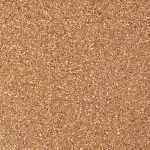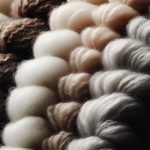Curious about acrylic fabric's softness? Like a sleuth unraveling a mystery, you're keen to uncover the truth. Let's delve into the world of acrylic fabric, exploring its true nature and demystifying the misconceptions surrounding its softness.
From the science behind its texture to factors influencing its feel, we'll leave no stone unturned. Armed with this knowledge, you'll be equipped to discern the softest acrylic fabrics and even learn how to enhance and maintain their plushness.
So, is acrylic fabric really soft? Get ready to unravel the enigma and emerge with a mastery of acrylic softness.
Key Takeaways
- Acrylic fabric is known for its wool-like properties and is lightweight, soft, and warm.
- Acrylic fabric is resistant to wrinkles, holds dye well, and can be machine washed with like colors and tumble dried on low heat.
- The softness of acrylic fabric is influenced by factors such as the manufacturing process, the type of yarn used, and proper fabric care.
- Acrylic fabric feels softer compared to cotton due to its smoother and rounder fibers, and it offers a distinct softness experience compared to wool and silk.
Understanding Acrylic Fabric
If you're looking for a fabric that's easy to care for and resistant to wrinkles, acrylic fabric may be the choice for you. Acrylic is a synthetic fabric known for its wool-like properties. It's lightweight, soft, and warm, making it a popular choice for sweaters, blankets, and other cold-weather garments.
One of the key acrylic properties is its resistance to wrinkles, which means that garments made from this fabric are easy to care for and maintain their shape well. Additionally, acrylic fabric is colorfast, meaning it holds dye well and resists fading, even after multiple washes.
When it comes to fabric care, acrylic is relatively low-maintenance. It can be machine washed with like colors and tumble dried on a low heat setting. However, it's important to avoid high heat, as it can cause the fabric to melt or lose its shape. Additionally, to prevent stretching, it's best to lay acrylic garments flat to dry.
The Science Behind Softness
Acrylic fabric is inherently soft, often feeling similar to wool, and it becomes even softer with repeated wear and washing. The science behind the perceived softness of acrylic fabric lies in its construction. The fibers are engineered to be ultrafine, creating a smooth and soft texture that feels gentle against the skin. Additionally, the way the fibers are spun and woven into fabric plays a crucial role in determining its softness. Acrylic fabric is often manufactured with a brushed or knitted finish, further enhancing its soft feel.
Softness perception is also influenced by the microscopic structure of the fabric. When examined closely, acrylic fibers have a cylindrical shape, which contributes to their softness. This shape allows the fibers to bend and flex more easily, creating a plush and supple sensation. Furthermore, the construction of the fabric affects how it drapes and conforms to the body, adding to the overall perception of softness. Therefore, the combination of fiber fineness, weaving technique, and microscopic structure all contribute to the exceptional softness of acrylic fabric.
Factors Affecting Acrylic Softness
Several factors contribute to the softness of acrylic fabric. The manufacturing process, yarn type, comfort level, fabric care, and softness perception all play a role in determining how soft the fabric feels against your skin. The manufacturing process can greatly impact the softness of acrylic fabric. For instance, the way the yarn is spun and the finishing techniques used can influence the final texture and feel of the fabric. Additionally, the type of yarn used, whether it's spun in a way that creates a smooth or textured surface, can affect the softness perception. Comfort level is another important factor, as it considers how the fabric feels when worn for extended periods. Proper fabric care also contributes to maintaining the softness of acrylic fabric over time.
| Factors | Impact on Softness |
|---|---|
| Manufacturing Process | Influences final texture and feel |
| Yarn Type | Determines the surface texture |
| Comfort Level | Considers wearability and feel over time |
Understanding these factors can help you select the softest acrylic fabric for your needs and maintain its softness for longer.
Comparative Softness Analysis
When it comes to the softness of fabrics, comparing acrylic to other materials such as cotton, wool, and silk can provide valuable insights.
You might be surprised to learn how acrylic's softness measures up against these popular fabrics.
Let's explore the comparative softness analysis of acrylic, cotton, wool, and silk to help you make informed decisions when choosing the softest fabric for your needs.
Acrylic Vs. Cotton Softness
Compared to cotton, acrylic fabric feels softer against your skin. Here's why:
- Fiber Structure: Acrylic fibers are smoother and rounder than cotton fibers, reducing friction against the skin and creating a softer feel.
- Moisture Absorption: Cotton has higher moisture absorption than acrylic, which can sometimes make it feel less soft when damp.
- Lint and Pilling: Acrylic fabric is less prone to forming lint and pilling compared to cotton, contributing to a consistently soft feel over time.
- Sensory Preference: The softness perception can also be subjective, with some individuals finding the silky, smooth texture of acrylic more appealing, while others prefer the natural, breathable feel of cotton.
These factors demonstrate that while both fabrics have their own softness qualities, acrylic can offer a distinct softness experience compared to cotton.
Acrylic Vs. Wool Softness
While acrylic fabric is known for its smooth and soft feel, the softness of wool presents a contrasting yet equally appealing tactile experience. Wool has a natural crimp that gives it a springy resilience, which contributes to its softness. The texture of wool is often described as luxurious and cozy, with a comforting warmth that makes it a popular choice for winter garments.
When comparing the softness of acrylic and wool, it's important to consider the individual preferences in texture. While acrylic offers a silky and lightweight softness, wool provides a more substantial and plush softness. Both have their own unique qualities, and the choice between them ultimately depends on the specific tactile sensation one seeks.
Acrylic Vs. Silk Softness
Acrylic fabric, known for its smooth and soft feel, can be compared to silk in terms of softness, offering a different tactile experience that appeals to various preferences. When comparing acrylic and silk softness, there are several factors to consider:
- Fiber Structure: Acrylic fibers are smooth and round, providing a soft texture, while silk fibers are naturally smooth and fine, offering an unparalleled luxurious softness.
- Thermal Properties: Acrylic fabric tends to retain more heat, which can affect the perception of softness, whereas silk is known for its ability to regulate temperature, contributing to a comfortable soft feel.
- Durability: Acrylic fabric, although soft, may not match the long-lasting softness and smoothness of silk, which tends to maintain its luxurious feel over time.
- Softness Perception: Individual preferences and sensory perceptions play a significant role in determining whether acrylic or silk is perceived as softer, making softness a subjective experience.
Enhancing Acrylic Softness
To enhance the softness of acrylic fabric, consider using a fabric softener during the washing process. Fabric softeners are designed to enhance comfort by smoothing and conditioning fibers, resulting in a softer feel. When washing acrylic garments, simply add a fabric softener to the rinse cycle to help maintain the fabric's softness. Additionally, using a gentle, pH-neutral detergent can also contribute to maintaining the softness of acrylic fabric.
Proper fabric care is essential in preserving the softness of acrylic. Always follow the care instructions on the garment's label to ensure that you're washing and drying it correctly. Avoid using harsh detergents or bleach, as these can damage the fibers and lead to a rougher texture. Opt for air drying or using a low heat setting in the dryer to prevent excessive heat from affecting the fabric's softness.
Incorporating these fabric care practices into your routine will help maintain the softness of acrylic fabric, ensuring that your garments remain comfortable and cozy to wear.
Maintaining Softness Over Time
To maintain the softness of acrylic fabric over time, regular fabric care and proper storage are essential. Here are four key tips to help you keep your acrylic fabric soft and comfortable:
- Gentle Washing: When washing acrylic fabric, use a mild detergent and opt for a gentle cycle to prevent excessive agitation that can cause the fibers to become rough and lose their softness. Avoid using fabric softeners as they can leave a residue that makes the fabric feel stiff.
- Air Drying: After washing, air dry your acrylic fabric items by laying them flat or hanging them. Avoid using the dryer, as high heat can damage the fibers and contribute to a loss of softness over time.
- Proper Storage: Store your acrylic fabric items in a cool, dry place away from direct sunlight. Excessive heat and sunlight can cause the fibers to deteriorate and lose their softness. Additionally, avoid overcrowding in storage to prevent unnecessary creasing and compression of the fabric.
- Regular Maintenance: Periodically fluff and shake out your acrylic fabric items to prevent the fibers from becoming matted or compressed. This simple maintenance routine can help maintain the softness and texture of the fabric.
Common Misconceptions About Acrylic Softness
You might be surprised to learn that there are some common misconceptions about the softness of acrylic fabric.
Understanding the factors that influence the softness perception of acrylic, as well as the different types of acrylic fabric, can help clarify these misconceptions.
Let's explore these points to gain a better understanding of the true softness of acrylic fabric.
Acrylic Softness Perception
Many people mistakenly believe that acrylic fabric is inherently rough and uncomfortable due to its synthetic nature, but in reality, it can be quite soft and pleasant to the touch. Acrylic softness perception is often clouded by misconceptions, but understanding the factors that contribute to the feel of acrylic fabric can dispel these myths:
- Fiber Quality: High-quality acrylic fibers can mimic the softness of natural fibers, providing a luxurious feel.
- Fabric Construction: The way acrylic fibers are woven or knitted into fabric can greatly impact its softness, with options ranging from smooth to textured finishes.
- Blending: Acrylic is often blended with natural fibers like wool or cotton, enhancing its softness and comfort while maintaining durability.
- Finishing Processes: Innovative finishing techniques can further enhance the softness of acrylic fabric, ensuring a gentle touch against the skin.
Factors Influencing Softness
One common misconception about acrylic softness is that it's solely determined by its synthetic nature, but this overlooks several key factors that significantly influence its feel.
Firstly, the fiber structure plays a crucial role. Acrylic fibers can be engineered to have different shapes and sizes, impacting how they feel against the skin.
Additionally, fabric finishing techniques such as brushing, shearing, or blending with other materials can greatly enhance the softness of acrylic fabric. These processes can alter the surface texture and overall hand-feel, making the fabric more pleasant to touch.
Understanding these factors allows for the creation of exceptionally soft acrylic fabrics that rival natural materials in terms of comfort and luxury.
Final Verdict: Is Acrylic Fabric Soft?
The final verdict is that acrylic fabric isn't as soft as natural fibers such as cotton or wool. While acrylic can be made to mimic the softness of natural fibers, it often falls short in comparison. Here's why:
- Fiber Structure: Acrylic fibers are smooth and round, lacking the natural crimp of wool or the soft, hollow structure of cotton, which affects the perception of softness.
- Maintenance: Acrylic fabric tends to pill over time, diminishing its initial softness, while natural fibers like cotton and wool maintain their softness with proper care.
- Misconceptions: Acrylic's initial softness can lead to misconceptions about its long-term softness. It may feel soft at first, but natural fibers tend to outlast acrylic in terms of softness and comfort.
- Perception: The perception of softness can vary from person to person, but generally, acrylic fabric isn't as inherently soft as natural fibers, and this difference becomes more apparent with prolonged use.
Frequently Asked Questions
Can Acrylic Fabric Be as Soft as Natural Fibers Like Cotton or Wool?
Acrylic fabric can be as soft as natural fibers like cotton or wool. Its softness depends on the quality and processing. Acrylic can mimic the texture of cotton and rival the softness of wool.
Are There Any Special Care Instructions for Maintaining the Softness of Acrylic Fabric Over Time?
To maintain the softness of acrylic fabric, use special fabric softeners designed for synthetic materials. Follow fabric care tips like washing in cool water, avoiding heat, and air drying to keep it feeling cozy over time.
How Does the Softness of Acrylic Fabric Compare to Other Synthetic Fabrics Like Polyester or Nylon?
When comparing softness, acrylic fabric is generally softer than polyester. However, in terms of softness durability, acrylic fabric may not hold up as well as nylon. It's important to consider the specific use and care instructions.
Can Certain Environmental Factors Affect the Softness of Acrylic Fabric, Such as Exposure to Sunlight or Humidity?
Sunlight exposure and humidity levels can affect acrylic fabric softness. Fabric softeners and specialty detergents can help maintain softness. Understanding these factors helps you master fabric care and ensure your acrylic garments stay soft.
Are There Any Specific Methods or Products That Can Be Used to Enhance the Softness of Acrylic Fabric, Such as Fabric Softeners or Specialty Detergents?
To enhance the softness of acrylic fabric, use fabric softeners or specialty detergents. Consider softness maintenance techniques and care instructions. Environmental factors impact softness. Comparative softness analysis with natural fibers can guide softness enhancement decisions.
- Why Is Red Velvet Not Red? - April 25, 2024
- How Do You Describe Velvet Fabric? - April 25, 2024
- How Strong Is Velvet? - April 25, 2024





